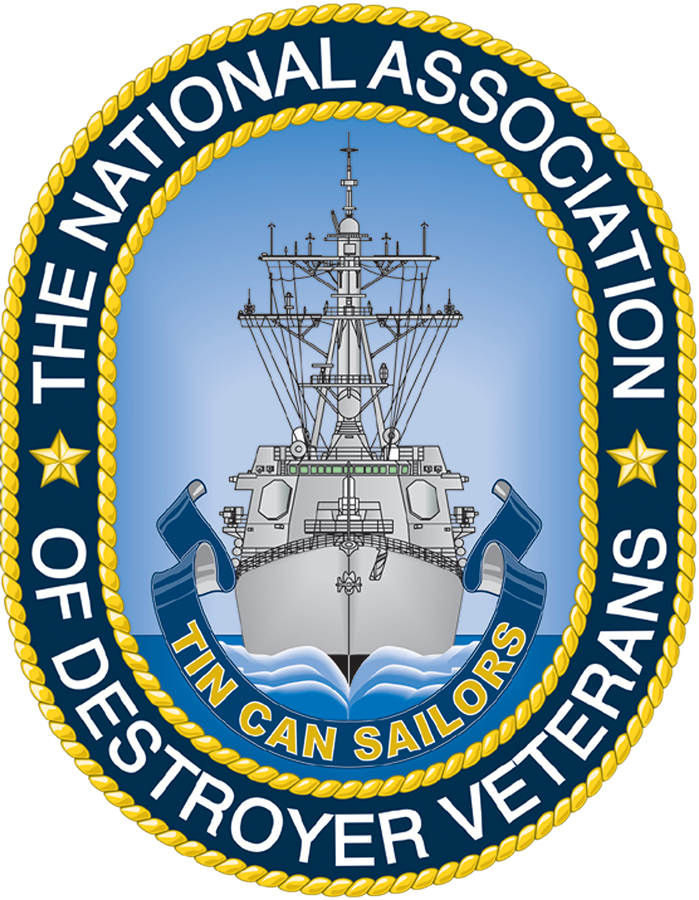Hull Number: DD-818
Launch Date: 08/18/1945
Commissioned Date: 04/05/1946
Call Sign: NNEW
Voice Call Sign: OASIS (54)
Other Designations: DDE-818
Class: GEARING
GEARING Class
Data for USS Gearing (DD-710) as of 1945
Length Overall: 390’ 6"
Beam: 40’ 10"
Draft: 14’ 4"
Standard Displacement: 2,425 tons
Full Load Displacement: 3,479 tons
Fuel capacity: 4,647 barrels
Armament:
Six 5″/38 caliber guns
Two 40mm twin anti-aircraft mounts
Two 40mm quadruple anti-aircraft mounts
Two 21″ quintuple torpedo tubes
Complement:
20 Officers
325 Enlisted
Propulsion:
4 Boilers
2 General Electric Turbines: 60,000 horsepower
Highest speed on trials: 34.6 knots
Namesake: JOHN DRURY NEW
JOHN DRURY NEW
Wikipedia (as of 2024)
Private First Class John Dury New (August 12, 1925 – September 25, 1944) was a United States Marine who for his gallantry in action at the cost of his life on Peleliu, posthumously received the Medal of Honor.
New was born to Jesse James New and Mary Magdalene Gambrel in Mobile, Alabama, and attended St. Joseph’s Parochial School and the public schools of that city.
He enlisted in the United States Marine Corps on December 8, 1941, the first Mobile man to enlist after Pearl Harbor. On December 12, 1941, he joined the 4th Recruit Battalion at the Marine Corps Recruit Depot Parris Island, South Carolina, and following recruit training served at Quantico, Virginia.
n September 1942, Private New joined the 4th Replacement Battalion, Fleet Marine Force, Training Center, at San Diego, California. He sailed for duty overseas the following month, and took part in the Guadalcanal campaign as a member of 2nd Battalion, 7th Marines, 1st Marine Division. He shared in the Presidential Unit Citation awarded the Division on Guadalcanal. He later took part in the seizure and occupation of Cape Gloucester, New Britain, and in the defense of the airfield in the vicinity of Cape Gloucester.
Promoted to private first class in April 1944, he moved from Cape Gloucester to Pavuvu, Russell Islands, to Guadalcanal, and on September 15, 1944, sailed for Peleliu in the Palau Islands. Nine days later, he was killed in action on Peleliu when he flung himself on an enemy hand grenade to save the lives of two comrades.
The Medal of Honor, awarded PFC New posthumously, was presented to his father.
Initially buried in the U.S. Armed Forces Cemetery on Peleliu, PFC New’s remains were reinterred in the Mobile National Cemetery, Mobile, Alabama, in 1948. His grave can be found in section 7-2147.
Medal of Honor Citation
The President of the United States takes pride in presenting the MEDAL OF HONOR posthumously to
UNITED STATES MARINE CORPS
for service as set forth in the following CITATION:
“For conspicuous gallantry and intrepidity at the risk of his own life above and beyond the call of duty while serving with the Second Battalion, Seventh Marines, First Marine Division, in action against enemy Japanese forces on Peleliu Island, Palau Group, 25 September 1944. When a Japanese soldier emerged from a cave in a cliff directly below an observation post and suddenly hurled a grenade into the position from which two of our men were directing mortar fire against enemy emplacements, Private First Class New instantly perceived the dire peril to the other Marines and, with utter disregard for his own safety, unhesitatingly flung himself upon the grenade and absorbed the full impact of the explosion, thus saving the lives of the two observers. Private First Class New’s great personal valor and selfless conduct in the face of almost certain death reflect the highest credit upon himself and the United States Naval Service. He gallantly gave his life for his country.”
Disposition:
Stricken 7/1/1976. To South Korea as Taejon 2/23/1977.
